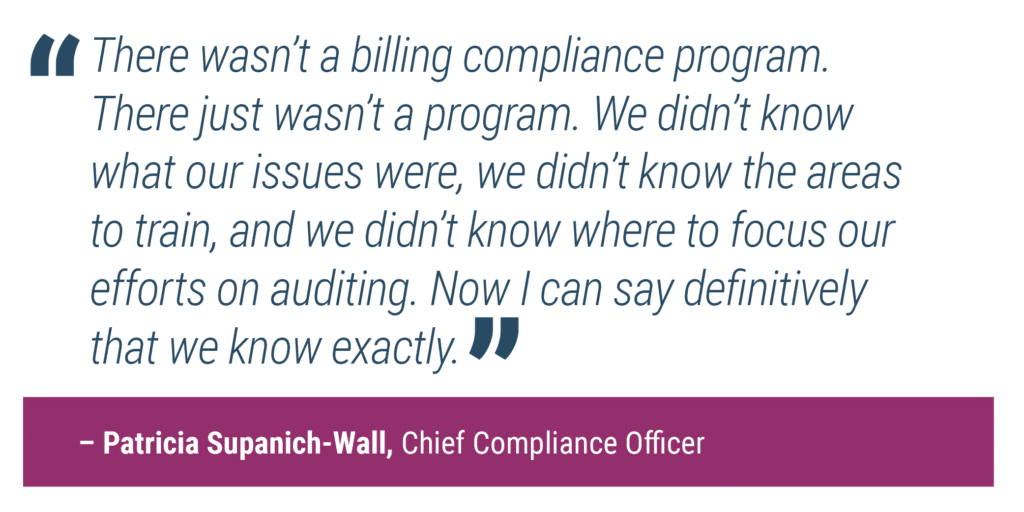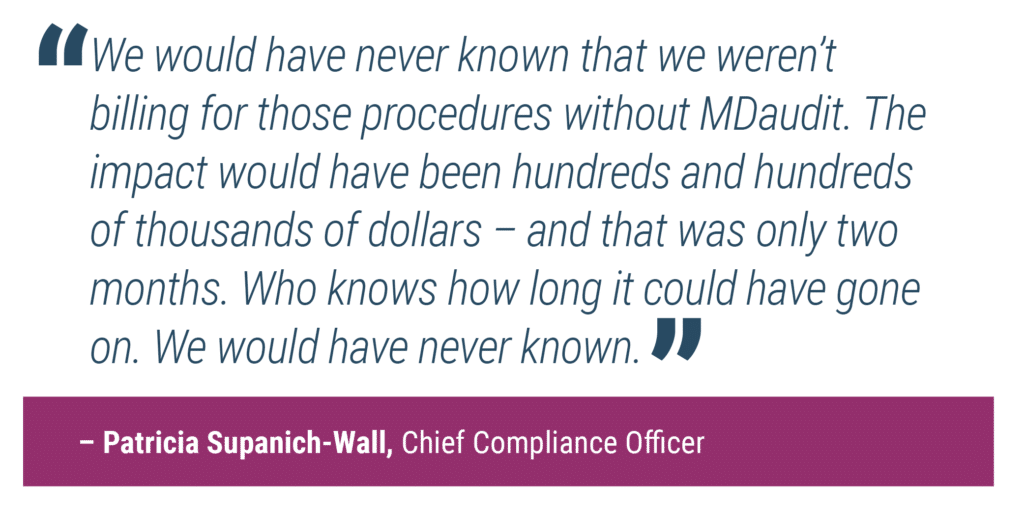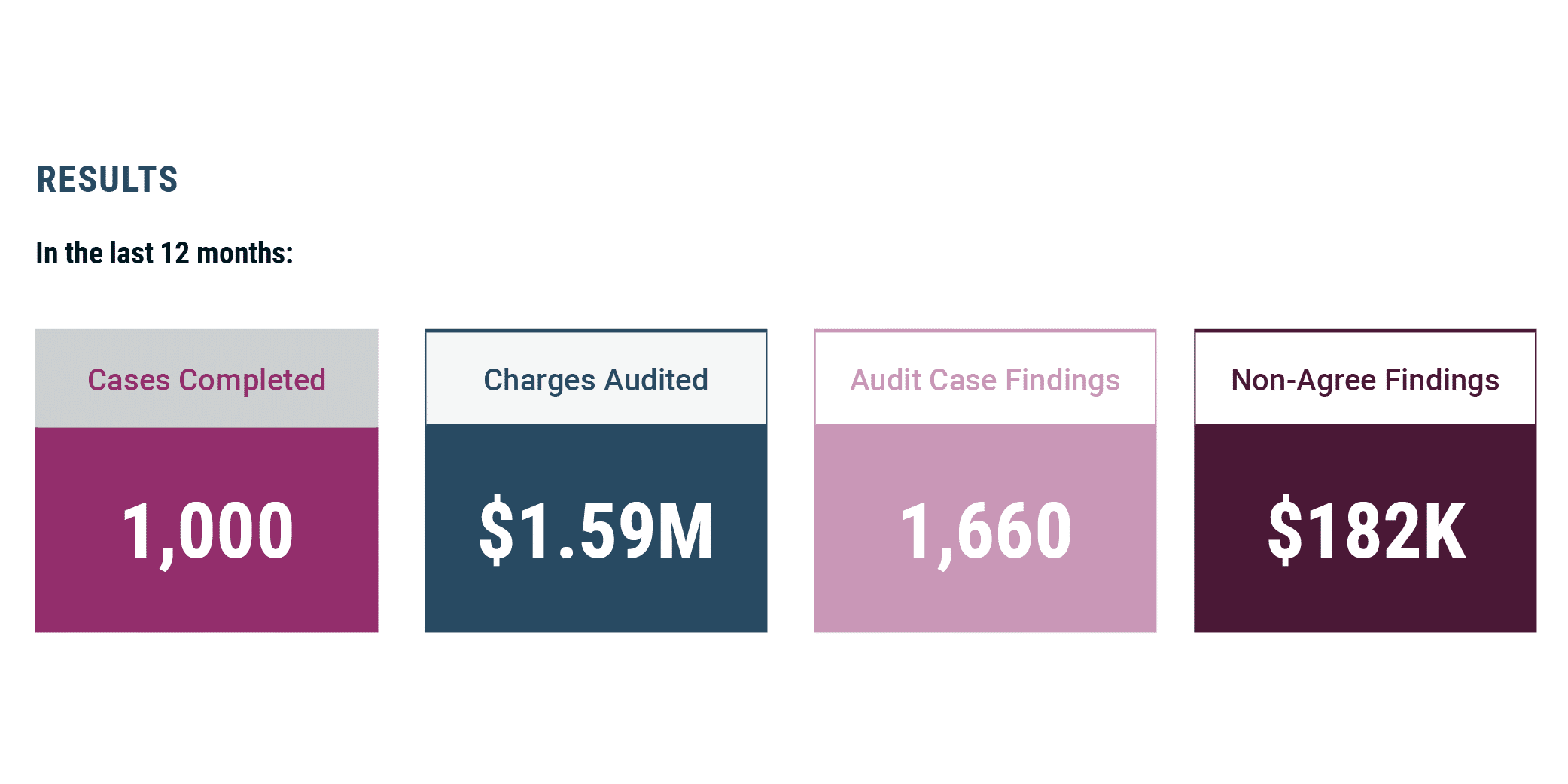THE CUSTOMER PROFILE
San Juan Regional Medical Center (SJRMC) is a nearly 200-bed Level III Trauma Center. With 19 specialty clinics, the rural, community-owned nonprofit hospital serves the Four Corners region of New Mexico, Arizona, Utah, and Colorado. Founded in 1910 by two physicians who saw a need for quality healthcare in their community, SJRMC now has approximately 1,650 employees with almost 200 providers and an extensive contractor network.
SJRMC continues to demonstrate the commitment to community service upon which it was built, actively engaging in the 340B Program. This crucial initiative facilitates the provision of affordable medication and enhances health outcomes for a substantial number of Americans and the non-profit hospitals dedicated to their care. By leveraging the cost-saving benefits of the 340B prescription drug program, SJRMC ensures the accessibility of comprehensive healthcare services for patients within the communities it serves.
THE CHALLENGE
When it comes to billing compliance, what a health system does not know can hurt the bottom line.
Changes in the healthcare industry are putting more pressure on oversight responsibilities for hospitals and health systems to avoid financial penalties, reimbursement takebacks, and tarnished reputations. As a rural hospital with a payer mix of 86% Medicare, Medicaid, and uninsured, it is especially crucial for San Juan Regional Medical Center to keep every possible dollar in house. Doing so requires not just discovering insights, but also investigating their sources through in-depth root cause analysis. Without understanding trends and how they are formed, hospitals cannot effectively plan and deploy resources to mitigate potential revenue risks and drive operational improvements.
Chief compliance officer, Patricia Supanich-Wall, explains that before partnering with MDaudit, SJRMC lacked access to critical risk and compliance information. “We had no data. It was one of our greatest challenges,” Supanich-Wall says. “There was no way to perform risk-based auditing at all. When something came up on a PEPPER report, it would take months to request someone build a report from our Cerner system, and it was usually incorrect.”
Healthcare organizations need to be flexible, agile, and adaptable to keep pace with continuously evolving governmental and private payer oversight. Building a collaborative work culture with shared data and insights can enhance performance across billing, revenue cycle, and compliance processes.
“There wasn’t a billing compliance program. There just wasn’t a program,” describes Supanich-Wall. “We didn’t know what our issues were, we didn’t know the areas to train, and we didn’t know where to focus our efforts on auditing. Now I can say definitively that we know exactly. It’s been really enlightening for us.”

THE SOLUTION
Driven by data, MDaudit helps to easily identify opportunities to improve revenue and establish risk-based auditing practices.
When SJRMC evaluated billing compliance and auditing solutions, they selected MDaudit for the powerful and user-friendly analytics tools. “Coming from an accounting and finance background, the methodology and analytics behind the reporting made a lot of sense to me,” explains Supanich-Wall. “And the randomization of audits is flexible to fit our needs.”
With pre-built analytics and peer benchmarking tools, MDaudit Billing Risks leverages charge data regularly ingested from claims to identify healthcare billing compliance insights. The drill-down dashboards and reports have helped SJRMC detect billing and coding anomalies and identify root causes and areas of risk. “That is what it means to have data at your fingertips,” says Supanich-Wall. “To be able to slice and dice the data and be able to analyze it to direct our risk-based auditing has been huge.”
Streamlined audit workflows enabled Supanich-Wall and her team to identify one interventional cardiologist who had no billable procedures charged in their first 60 days at SJRMC due to charting errors. “Because this provider is a locum, we would have never known that we weren’t billing for those procedures without MDaudit,” explains Supanich-Wall. “The impact would have been hundreds and hundreds of thousands of dollars – and that was only two months. Who knows how long it could have gone on. We would have never known.”
More routine practices also have the potential to make a significant impact on the hospital’s bottom line. A standard audit for a provider who administered a high volume of Botox injections for migraines and neurological issues revealed that product waste was not being billed accurately. Supanich-Wall describes, “It was being billed at one unit for each injection, instead of the actual micrograms wasted. This has been going on since 2019 when we went live with Cerner, and we would have never known if we didn’t have MDaudit. We can’t recoup all of that money, but we can be confident that it won’t continue in the future.”
Supanich-Wall describes the ways in which her compliance department has uncovered efficiencies and revenue retention opportunities across the hospital. “Like an error in our system that wasn’t built out properly for the units or modifier for a J code, for example.” Coordinating across multiple departments is crucial to maximizing hospital revenue retention. With access to clearer insights, health systems like SJRMC are able to identify risk areas and create the appropriate correction plans – including specialized training for providers and coders, collaboration with revenue cycle and billing teams, and even identifying and completing necessary revisions in the existing EHR and billing systems.
“MDaudit has helped us uncover a lot of revenue opportunities and has facilitated a lot of really good conversations across our organization,” says Supanich-Wall. “And there is still so much more data to leverage in bringing in other departments to help them work a little smarter.”

THE RESULTS







